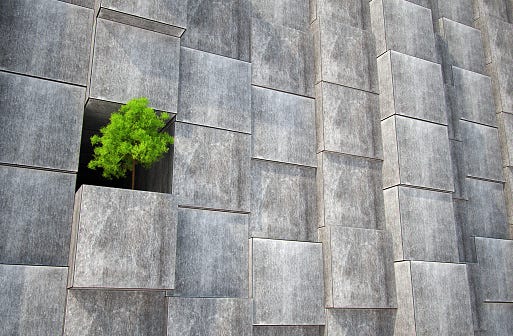As the world progresses, we become more aware of our actions impact on the environment. Concrete is one of the most common materials used in construction, responsible for 4% of the world’s carbon dioxide emissions.
Eco-friendly concrete is a type of concrete that has a lower carbon footprint than traditional concrete. It can be made with recycled materials, fly ash, slag cement, and other industrial byproducts. This blog post will explore 4 of the best types of eco-friendly concrete.
Portland Cement Concrete:
Portland cement concrete (PCC) is a type of concrete that uses Portland cement as a binder. Portland cement is a hydraulic cement that sets and hardens when mixed with water. PCC is the most common type of concrete used in construction, as it is strong, durable, and easy to work with.
PCC is made by mixing Portland cement, aggregate (sand or gravel), and water. The proportions of these ingredients can be varied to produce different types of concrete with different properties. For example, adding more aggregate will make the concrete denser and less susceptible to shrinkage cracking. Adding more Portland cement will strengthen the concrete and make it more resistant to weathering.
PCC can be cast in any shape or size, making it versatile for various applications. It is commonly used for sidewalks, driveways, floors, walls, and structural elements such as bridges and buildings.
There are many benefits to using PCC over other types of concrete:
PCC has a high compressive strength, making it ideal for load-bearing applications.
It has good resistance to weathering and chemical attacks.
It can be cast into any shape or size desired.
It has a lengthy lifespan.

However, there are also some disadvantages associated with PCC:
It has a high carbon footprint due to the production of Portland cement
It requires regular maintenance, such as sealing and resurfacing
Recycled Concrete Aggregate:
Regarding eco-friendly concrete, recycled concrete aggregate (RCA) is one of the best options available. RCA is made from a recycled concrete that has been crushed and screened to size. It can be used in a variety of applications, including:
As a base material for roads, driveways, and parking lots.
As an aggregate in new concrete mixes
As fill material
To stabilize soft soils.
The main advantage of RCA is that it reduces the need for virgin materials. This saves energy and resources and reduces the environmental impact of concrete production. RCA is also typically cheaper than other types of aggregate, making it a cost-effective option.
Fly Ash Concrete:
Fly ash concrete is made with fly ash, a byproduct of burning coal. It is a partial replacement for cement, saving energy and reducing greenhouse gas emissions. Fly ash concrete is just as strong and durable as regular concrete, but it is lighter in weight and has a lower carbon footprint.
Rubberized Concrete:
Rubberized concrete is made with crumb rubber, a waste product from tire manufacturing. This eco-friendly concrete is solid and durable, making it a good choice for high-traffic areas. It is also slip-resistant, making it a good choice for wet areas.
How To Make Your Concrete Project Eco-Friendly?
As more and more homeowners are looking for ways to be eco-friendly, they are turning to concrete as a building material. Concrete is a sustainable material with a low carbon footprint and can be recycled. Here are some tips on how to make your next concrete project eco-friendly:
Use recycled concrete: Recycled concrete is a great way to reduce your carbon footprint. It can be used as aggregate in new concrete projects or as fill material.
Use fly ash: Fly ash is a byproduct of coal combustion and is typically disposed of in landfills. However, it can be used as an additive in concrete, reducing the amount of cement needed and lowering the project’s carbon footprint.
Use previous concrete: Pervious concrete is a type of concrete that allows water to drain through it, making it ideal for projects where stormwater management is a concern. This type of concrete can also help reduce the urban heat island effect by allowing water to evaporate from its surface.
Use alternative blocks of cement: There are many types of cement available that have lower emissions than traditional Portland cement, such as slag cement and rice husk ash cement. Using these alternative cements can significantly reduce the carbon footprint of your project.
Conclusion:
Eco-friendly concrete is a great way to reduce your carbon footprint and make your home or business more sustainable. There are many different types of eco-friendly concrete, each with its advantages.
We hope this article has helped you learn more about the best types of eco-friendly concrete and how they can benefit your next project.